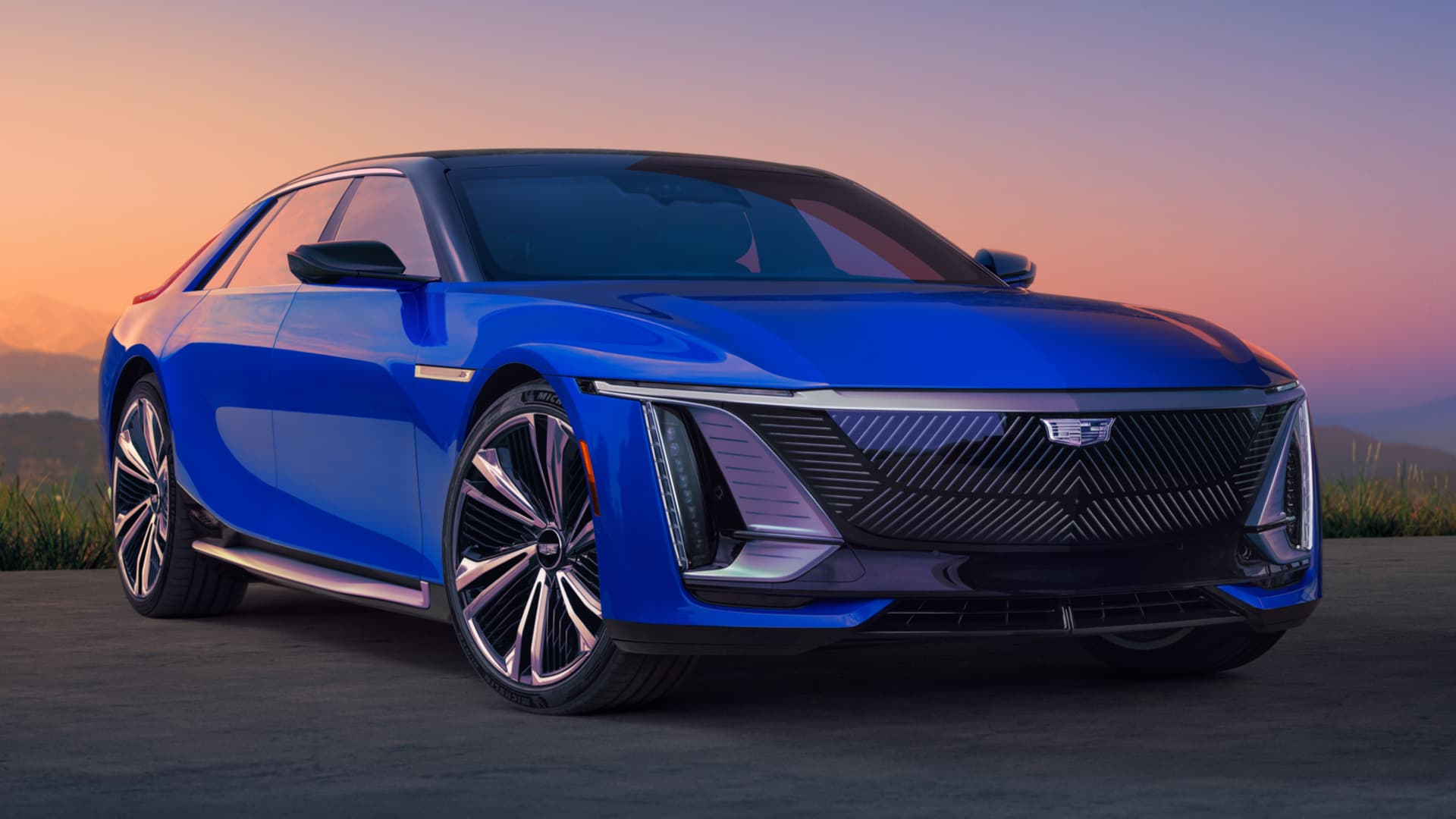DETROIT – Cadillac is testing the limits of its brand allure and pricing power with the 2024 Celestiq – a large, bespoke electric car that will start at more than $300,000.
The vehicle – unveiled Monday night – launches the General Motors brand into the ultra-luxury segment against the likes of Bentley and Rolls-Royce. It’s something no American brand has successfully done in modern times.
Executives say the vehicle is more about creating a “halo car” that helps burnish Cadillac’s image, rather than fueling overall sales or profits. But, if successful, it could create a new two-unit business model for the company: one focused on hand-built, high-end vehicles and the other on mass-produced models.
“It is a brand builder. It’s a halo vehicle. It will lift people’s perception of the brand,” Rory Harvey, global vice president of Cadillac, told CNBC. “The business case has and continues to evolve, but it’s not just purely about the car. It’s about what it does for Cadillac and how it lifts the other Cadillac variants.”
Harvey declined to discuss the vehicle’s profit margins or whether the company plans to add additional hand-built models.
Customers will be able to customize nearly all aspects of the vehicle’s interior trim, exterior color and other nonmechanical elements. They’ll be able to work with designers and a Cadillac concierge to customize their vehicle.
“I don’t want to see this as a Mary Kay car, but the reality is, if you want to do an outrageous car, that’s the point,” said Michael Simcoe, GM vice president of global design, citing the unique “santorini blue” of the Celestiq unveiled Monday night.
Despite growing concerns around the demand for new mass-market vehicles due to rising interest rates and record prices, ultra-luxury buyers have continued to spend.
Low production
GM plans to only produce hundreds of Celestiq cars per year. It will only have capacity to build fewer than two vehicles per workday, Harvey said. The car will be sold globally, with the largest markets expected to be the U.S. and China.
The Celestiq will be available by request only, with “a significant deposit” needed to begin the build process, according to Harvey. Ordering for the car will start as early as later this year, followed by production beginning in December 2023, according to GM.
In June, GM announced it would invest $81 million at its tech center in suburban Detroit to hand-build the Celestiq – marking the first time it will produce a vehicle for commercial sales at its massive campus in Warren, Michigan.
The vehicle features technologies including adaptive air suspension, magnetic ride control and rear steering to balance the ride comfort and performance of the car. It also includes 115 3D printed parts, including the metal center of the steering wheel of the vehicle.
Cadillac has not sold a hand-built vehicle for decades, but its crosstown rivals have offered such cars as custom performance models. Stellantis‘ Dodge offered “one-of-one” custom vehicle builds for its Viper sports car in 2015. Since 2016, supplier and contract manufacturer Multimatic Inc. has produced a hand-built, $500,000 GT sports car for Ford Motor, which is discontinuing the vehicle at the end of this year.
The Celestiq is Cadillac’s second all-electric vehicle following the Lyriq crossover going on sale earlier this year. They are the beginning of a new lineup of electric cars and SUVs for the brand as it plans to exclusively make all-electric vehicles by 2030.
Tech
The Celestiq, which GM previewed earlier this year, is big. At roughly 18 feet long and 7 feet wide, it is wider and longer than a Cadillac Escalade SUV. It is based on the automaker’s Ultium electric vehicle platform, but with an exclusive car structure.
GM says the car is expected to achieve more than 300 miles on a single charge, with performance of 600 horsepower, 640 foot-pounds of torque and a 0-60 mph time of 3.8 seconds. The range and performance are lower than some current, less expensive luxury EVs such as the smaller $169,000 Lucid Air.
Noticeably missing from the Celestiq are exterior door handles. Instead, owners can open the doors by pressing a button or have doors open automatically as the driver approaches the vehicle with a key fob, according to GM.
The Celestiq features five LED interactive displays, including a 55-inch diagonal screen spanning the front cabin of the car; a “smart glass roof” that includes customizable transparency options; and Ultra Cruise, GM’s next-generation advanced driver-assist system that the company has said will be capable of driving itself in most circumstances.
“When we started this process, the brief then we gave to the team was to develop the most epic Cadillac ever,” said Brandon Vivian, Celestiq executive chief engineer. “But the result is a vehicle unlike any other. … It’s a custom-commissioned celebration of the client’s individuality.”
Vivian said Ultra Cruise’s capabilities will build up over time. He declined to discuss how different the system will be compared with GM’s current Super Cruise system, which allows users to keep their hands off the steering wheel while driving on pre-mapped divided highways.
Ultra Cruise should be far more capable than the current system, as it’s expected to build on Super Cruise’s software and sensor suite by adding lidar, or light detection and ranging systems, that can sense surroundings and help cars avoid obstacles.
